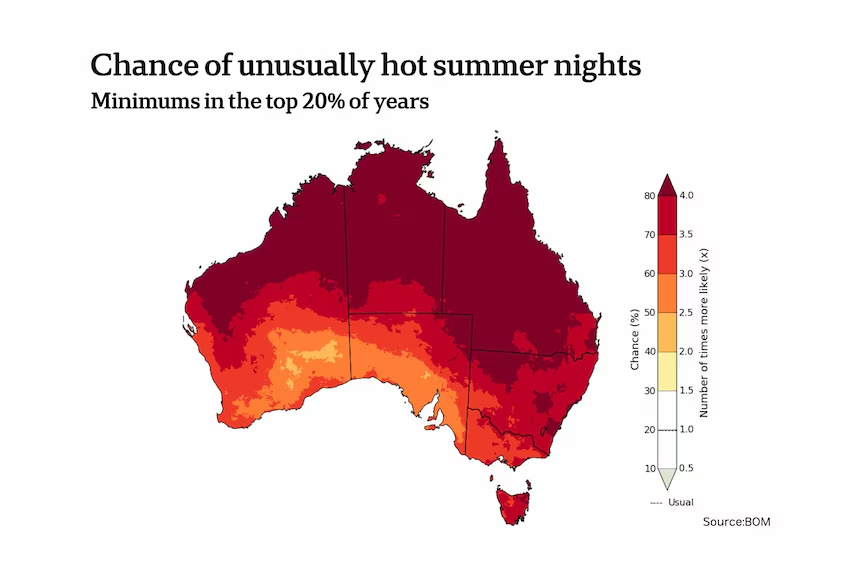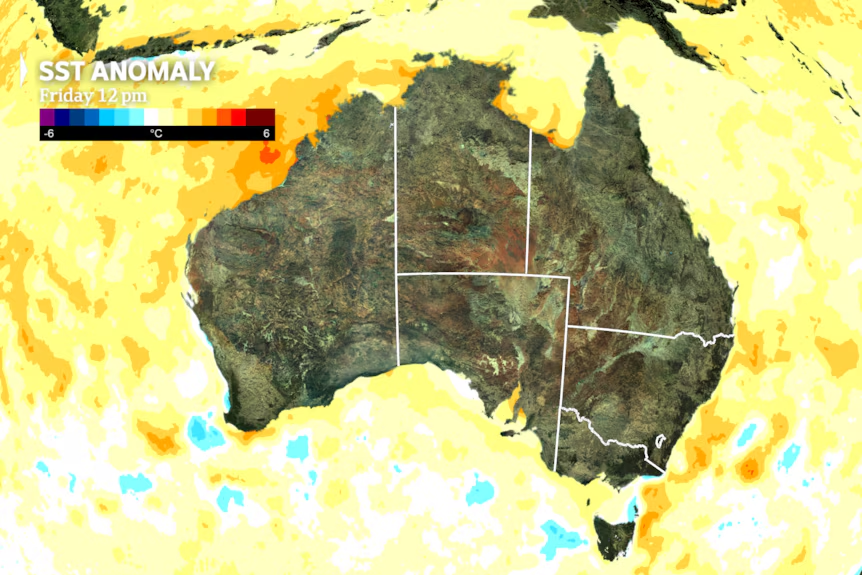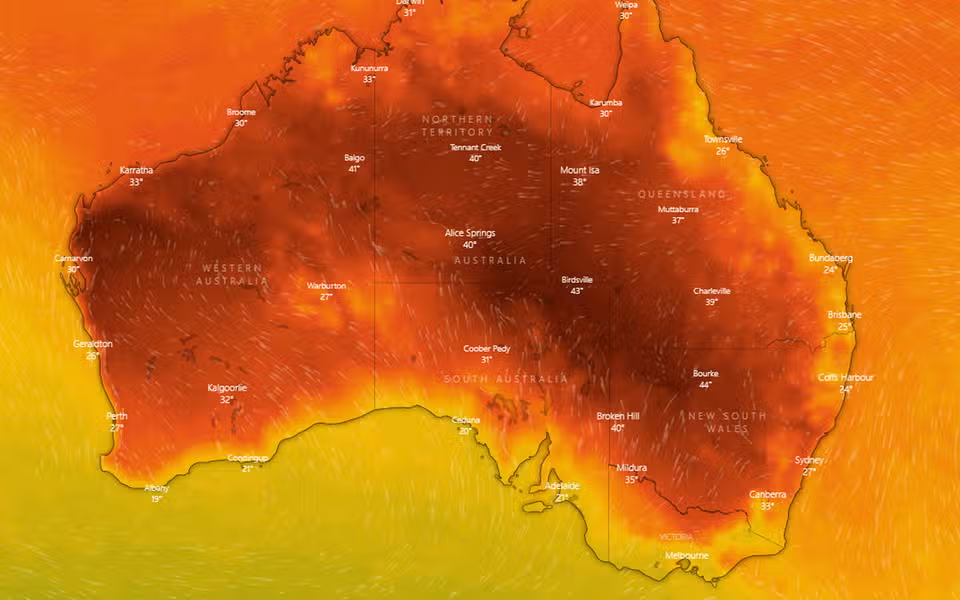According to the BOM’s weather forecasting model, Australia is expected to experience one of the hottest summers ever recorded.
The predicted temperatures are mainly due to the high levels of ocean heat that have been affecting the country since last year.
The warm waters will increase the levels of atmospheric moisture and raise air temperatures. This will result in more frequent and above-average rain and storm outbreaks.
The BOM also noted that the oceans could trigger more cyclones in Australia, with around 11 named storms expected to hit the country.

The three years that didn’t feature La Nia periods were the hottest on record in Australia. In each of these years, the mean temperature exceeded 1.6 degrees Celsius.
This indicates that the country will experience above-average temperatures during the summer season.
This week, the BOM released its summer forecast, which indicated that there is a high likelihood that the minimum temperatures will reach the top 20 degrees Celsius in some areas.
While it’s not unusual for this time of year, the agency noted that the likelihood of experiencing high temperatures is less extreme.
The model also indicated that there is a 30 to 60 percent chance that the country will experience high daytime temperatures.

The odds of summer temperatures occurring in the lower 20 percent of years are almost certainly below 10 percent.
The bullish outlook is mainly due to the exceptional heat that has been affecting the country’s surrounding oceans.
According to the sea surface temperature, which is currently higher than normal off the country’s coast, waters are around 2.5 degrees Celsius above average off Broome’s coast.
Ocean heat can affect the temperature inland when winds are onshore. Climate change is another key factor that has made summers in recent decades warmer than normal.
Except for the exceptional La Nia years of 2010, 2011, and 2022, summers in the country have been consistently warmer than normal.
The BOM’s seasonal forecasting model indicates that the country’s mean temperature is expected to reach 1.5 degrees Celsius above the 1961-1990 average during the summer season.
If the prediction comes true, it will place the country in the top five hottest summers on record. Besides being more likely to cause extreme heat, a sweltering summer can also increase the risk of experiencing dangerous heatwaves.
High temperatures can also increase the risk of bushfires. Although these fires can occur anywhere, they are more likely to affect areas that are experiencing drought conditions.
This summer, the situation is particularly worrying for the drought-stricken regions of Victoria and South Australia. In 2024, some locations in these regions experienced their lowest rainfall totals.
Nine months into the year, Australia has already experienced its wettest start to a season since 2011.
The country is expected to continue experiencing above-average rain throughout the rest of the year and early next year.
The wet outlook is mainly dependent on the local conditions caused by the warm waters in the oceans.

